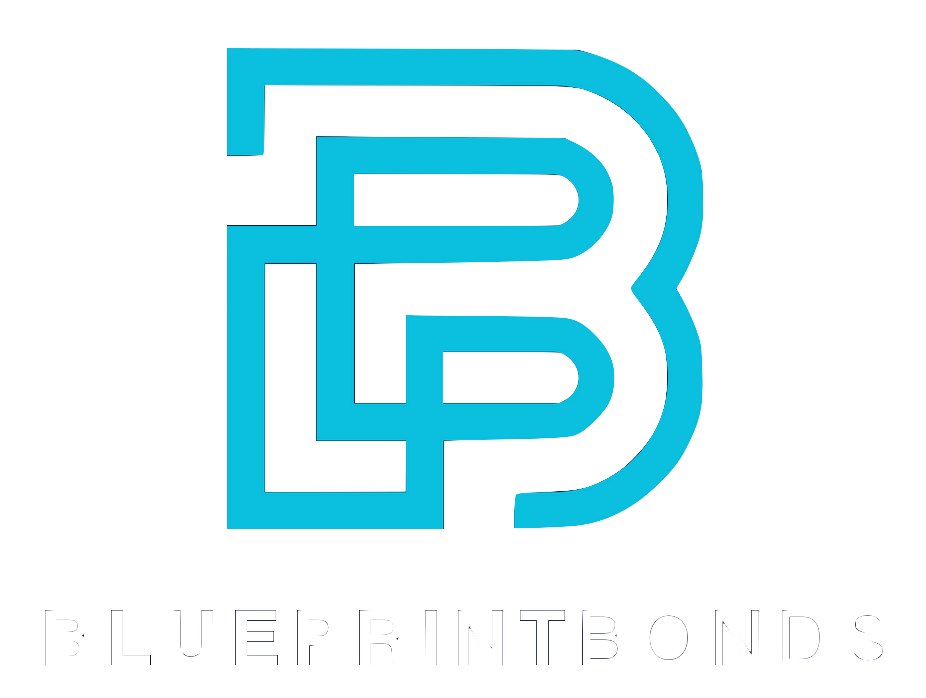Handling a bond claim can be a daunting experience, especially when project delays, contract disputes, or financial uncertainties come into play. However, understanding the process and knowing how to navigate it effectively can significantly reduce stress and improve outcomes. Whether you are a contractor, a project owner, or a surety professional, this guide will walk you through the essential steps to manage a bond claim with confidence and clarity.
In recent years, surety bond litigation has seen notable shifts. For instance, in 2021, the number of surety bond cases filed dropped to 409, marking the lowest point in a decade. This trend reflects evolving industry dynamics and highlights the importance of proactive claim management. For those interested in the broader legal landscape, insights from Lex Machina’s 2022 Surety Bond Litigation Report provide valuable context on case filing trends and key players.
Understanding the Basics of a Bond Claim
Before diving into the procedural steps, it’s crucial to grasp what a bond claim entails. A surety bond is a three-party agreement involving the obligee (the project owner), the principal (the contractor), and the surety (the bonding company). The bond guarantees that the principal will fulfill contractual obligations. When the principal fails to meet these obligations, the obligee can file a claim against the bond to recover losses.
Claims often arise from non-compliance with contract terms or missed project milestones. Recent trends indicate an increase in such claims, underscoring the importance of thorough contract management and documentation throughout the project lifecycle. It is not uncommon for project owners to experience significant financial strain when a contractor defaults, making the role of the surety bond even more critical in protecting their interests. Understanding the specific terms of the bond, including the conditions under which a claim can be made, can greatly influence the outcome of a dispute.
Given the complexity, it’s essential to approach bond claims systematically to avoid unnecessary delays or disputes. This includes gathering all relevant documentation, such as contracts, correspondence, and project records, to substantiate the claim. Additionally, engaging with legal counsel experienced in surety claims can provide valuable insights into the nuances of the bond and the claims process. As the construction industry evolves, staying informed about changes in regulations and best practices related to bond claims can empower both contractors and project owners to navigate potential challenges more effectively
Step 1: Immediate Response and Documentation
When a bond claim is initiated, time is of the essence. The first step is to acknowledge receipt of the claim promptly and begin gathering all relevant documentation. This includes the original contract, bond agreement, correspondence, project schedules, and any records of delays or disputes.
Accurate and comprehensive documentation is the backbone of a strong defense or resolution strategy. It helps clarify the circumstances surrounding the claim and supports your position in negotiations or potential litigation. This documentation should be organized systematically, allowing for quick access to information when needed. Consider creating a dedicated folder—either physical or digital—where all related documents can be stored. This not only streamlines the process but also ensures that no critical information is overlooked during the review.
It’s worth noting that the surge in surety bond claims related to project delays during the COVID-19 pandemic highlighted how unforeseen events can complicate claims. Businesses faced financial strain, and projects were disrupted, leading to increased claims. Being proactive with documentation during such times is even more critical. For more on these emerging trends, CBI Alliance’s insights on surety bond claims offer a detailed perspective. Furthermore, the importance of maintaining clear communication with all stakeholders cannot be overstated. Regular updates and transparent discussions can help mitigate misunderstandings and foster a collaborative approach to resolving issues, ultimately leading to more favorable outcomes for all parties involved.
In addition to gathering documentation, it is essential to engage legal counsel early in the process. An attorney with experience in surety bond claims can provide invaluable guidance on navigating the complexities of the claim and help ensure that all legal requirements are met. They can assist in interpreting the bond language, advising on potential liabilities, and formulating a response strategy that aligns with your business objectives. Early legal involvement can also help in identifying any potential defenses that may be available, which could significantly influence the direction of the claim.
Step 2: Engage with the Surety and Legal Counsel
Once the claim is acknowledged and documentation is collected, the next step is to engage with the surety company and, if necessary, legal counsel. Open communication with the surety can facilitate a smoother claims process, as sureties often have a vested interest in resolving disputes efficiently.
Legal counsel specializing in surety bonds can provide crucial guidance, especially if the claim involves complex contractual issues or potential litigation. According to Kristal Mendoza-Bautista, a surety bond legal data expert, monitoring the activity of insurance companies and law firms involved in surety bond cases can offer strategic insights into handling claims effectively.
Understanding the legal landscape and having expert advice can prevent costly mistakes and help you navigate the nuances of bond claims with greater confidence. Engaging with legal counsel early in the process can also help clarify the specific obligations outlined in the bond agreement, ensuring that all parties are aware of their rights and responsibilities. This proactive approach can mitigate misunderstandings and foster a more collaborative atmosphere, which is essential for resolving disputes amicably.
Moreover, it is beneficial to keep detailed records of all communications with the surety and legal representatives. This documentation can serve as a valuable reference point should any discrepancies arise later in the claims process. By maintaining transparency and a clear line of communication, you not only strengthen your position but also demonstrate your commitment to resolving the matter efficiently. In some cases, sureties may even provide additional resources or support to facilitate the claims process, further underscoring the importance of a cooperative relationship.
Step 3: Assess the Validity of the Claim
Not every claim filed against a bond is valid or justified. A critical step is to thoroughly assess the claim’s merits by reviewing contract terms, project performance, and compliance with milestones. This review should identify any breaches or failures on the part of the principal or obligee.
In some cases, claims may stem from misunderstandings or incomplete information. Early identification of such issues can open the door to negotiation and settlement, avoiding protracted disputes.
Given the evolving nature of the surety bond industry, experts like Alison Brouse from AssuredPartners emphasize the importance of adapting to new challenges and technologies to improve claim assessments and risk management. Staying informed about industry developments can enhance your ability to evaluate claims accurately.
Additionally, it is crucial to engage with all parties involved in the claim process, including subcontractors and suppliers, to gather a comprehensive view of the situation. This collaborative approach can uncover critical details that may not be immediately apparent, such as delays caused by external factors or changes in project scope that were not documented. By fostering open communication, stakeholders can work together to clarify misunderstandings and potentially resolve the claim before it escalates.
Furthermore, utilizing advanced data analytics tools can significantly enhance the assessment process. These tools can analyze historical claim data, identify patterns, and predict outcomes based on similar past claims. By leveraging technology, surety professionals can make more informed decisions, streamline their processes, and ultimately reduce the time and costs associated with claim resolution. This proactive stance not only strengthens the assessment of current claims but also builds a more resilient framework for future projects.
Step 4: Negotiate and Explore Alternative Dispute Resolution
Once the claim’s validity is assessed, consider negotiation or alternative dispute resolution (ADR) methods such as mediation or arbitration. These approaches can save time and costs compared to formal litigation, which can be lengthy and stressful.
Negotiations often involve compromise and creative solutions that satisfy all parties. The surety bond industry’s evolution toward embracing technology and specialty bonds has also introduced new tools and platforms that facilitate dispute resolution. For instance, online mediation platforms allow parties to engage in discussions without the need for physical presence, making it easier to reach agreements regardless of geographical barriers. This digital shift not only streamlines the process but also enhances accessibility for all involved, ensuring that even those in remote locations can participate fully in the negotiations.
For those interested in the broader impact of bond markets and financial instruments, the 2022 Impact Bond Report by ICE highlights global trends in bond issuance and market dynamics, providing useful context for understanding how surety bonds fit into the larger financial ecosystem. Additionally, the report delves into the rising significance of green bonds and sustainability-linked instruments, which are becoming increasingly relevant in today’s investment landscape. As stakeholders become more aware of environmental and social governance (ESG) criteria, the integration of these principles into bond markets is reshaping how disputes are approached and resolved, fostering a more responsible and forward-thinking financial environment.
Moreover, engaging in ADR methods not only helps in resolving disputes but also fosters better relationships among parties. The collaborative nature of mediation, for example, encourages open communication and understanding, which can lead to more amicable resolutions and a foundation for future cooperation. This is particularly important in industries like construction and real estate, where ongoing partnerships are essential for long-term success. By prioritizing negotiation and ADR, parties can cultivate a culture of collaboration, ultimately benefiting the entire industry.
Step 5: Prepare for Litigation if Necessary
If negotiation and ADR fail, preparing for litigation becomes necessary. This involves working closely with legal counsel to develop a comprehensive case strategy, including gathering expert testimony, preparing evidence, and understanding procedural requirements.
While litigation can be intimidating, being well-prepared reduces uncertainty and increases the likelihood of a favorable outcome. It’s important to stay organized and maintain clear communication with all parties involved.
Interestingly, the number of surety bond cases filed has decreased significantly in recent years, suggesting that many disputes are resolved before reaching court. However, when litigation is unavoidable, staying informed about legal precedents and industry trends is invaluable. For example, the study of corporate bond pricing models by Warwick Business School revealed how fundamental errors in data can impact financial decisions, underscoring the importance of accuracy in legal and financial analysis.
Moreover, as you prepare for litigation, consider the role of technology in streamlining the process. E-discovery tools can help sift through vast amounts of documentation, making it easier to locate relevant evidence. This not only saves time but also minimizes costs associated with manual document review. Additionally, utilizing case management software can assist in tracking deadlines, managing communications, and organizing case files, ensuring that nothing falls through the cracks during this critical phase.
It’s also essential to anticipate the emotional toll that litigation can take on all parties involved. The stress of a legal battle can be overwhelming, and it’s crucial to have a support system in place. Engaging with professionals, such as legal consultants or mental health experts, can provide guidance and coping strategies, helping to maintain focus and clarity throughout the litigation process. Understanding the psychological aspects of litigation can empower you to navigate the challenges ahead with resilience and determination.
Step 6: Implement Lessons Learned and Improve Contract Management
After resolving a bond claim, whether through settlement or litigation, it’s crucial to analyze the experience and implement improvements. Many claims arise from contract non-compliance or mismanagement, so enhancing contract oversight can prevent future issues.
Effective contract management includes clear documentation, regular project monitoring, and proactive communication among all stakeholders. These practices reduce risks and help identify potential problems early. For instance, utilizing project management software can streamline documentation processes, allowing teams to track changes and updates in real-time. This not only fosters accountability but also ensures that all parties are on the same page, significantly minimizing the chances of misunderstandings that could lead to claims.
As the surety bond industry continues to evolve, embracing technology and sustainability initiatives can further strengthen risk management and claims handling. Alison Brouse’s insights highlight how these trends are shaping the future of surety bonds, making it essential for businesses to stay agile and informed. Additionally, integrating data analytics into contract management can provide valuable insights into performance metrics and help identify patterns that may indicate underlying issues. By leveraging these analytical tools, companies can make informed decisions that enhance their operational efficiency and reduce the likelihood of future claims.
Moreover, fostering a culture of continuous improvement within the organization can lead to better contract outcomes. Training programs focused on best practices in contract management and risk assessment can empower employees to recognize potential pitfalls and address them proactively. Engaging in regular workshops or seminars can also keep the team updated on industry standards and regulatory changes, ensuring that the organization remains compliant and competitive in an ever-changing landscape.
Final Thoughts: Staying Calm and Confident
Handling a bond claim doesn’t have to be a sleepless ordeal. By following a structured process—acknowledging claims promptly, engaging experts, assessing validity, exploring resolution options, preparing for litigation if needed, and learning from each case—you can navigate the complexities with greater ease.
Remember, the surety bond landscape is dynamic, influenced by economic shifts, legal trends, and market developments. Staying informed through reliable sources and expert insights is key to managing claims effectively and protecting your interests.
For those looking to deepen their understanding of surety bond litigation trends and industry evolution, resources like the Lex Machina report and expert commentary from AssuredPartners provide valuable guidance.
In addition to these resources, networking with industry professionals can offer unique perspectives and firsthand experiences that are invaluable. Attending seminars, webinars, or industry conferences can not only enhance your knowledge but also connect you with others who are navigating similar challenges. Engaging in discussions with peers can lead to discovering innovative strategies and solutions that may not be readily available in written resources.
Furthermore, consider the importance of continuous education in this field. Many organizations offer certification programs and training sessions focused on surety bonds and claims management. By investing time in these educational opportunities, you not only bolster your own skill set but also demonstrate to clients and stakeholders your commitment to professionalism and expertise in the ever-evolving landscape of surety bonds.




